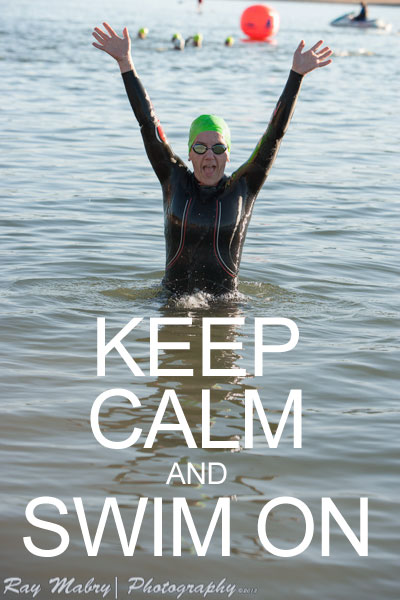Last updated on October 22nd, 2013 at 07:35 pm
When you think of exercising, the concept of impact and intensity seem like they would be closely related. That isn’t always the case.
Impact can be described as the force of your body that is used in an exercise. Think of the difference between jumping on a trampoline, compared to jumping down a few steps onto a concrete sidewalk. The trampoline would be low-impact, and the jump onto the sidewalk, super high impact.
Intensity refers to the power you use for the exercise. The trampoline can be high intensity if you are jogging at a quick pace, while the step jump could be a slow pace, not really getting your heart pumping.
So what are we fitness dreamers to do?
High impact exercises put a lot of stress on joints, so ideally we would want low-impact but high intensity exercises to use for our dream fitness goals without adding to any potential joint pain.
Dream fitness low-impact high intensity exercise: Swimming
I know everyone has different comfort levels with the water. I have friends that will jump in the pool without hesitation, and others who will stay away from a lake like it was boiling cauldron.
I was extremely lucky. I grew up with a pool, which is not uncommon in Northern California. I spent my summers acting like a fish on a regular basis. My favorite memories of swimming were while it was raining. I would hold my breath as long as I could underwater just to watch the raindrops splash in the water above my head.
Not everybody is as comfortable with water, and if you are open to splashing about and learning a few things, I recommend swim workouts.
This month marks one year since I started lap swimming as an adult.
All my years of swimming as a kid was purely for fun and entertainment. I had basic swim classes, just enough to learn how to get across the pool without drowning.
The whole story of why I even bothered to get back in the pool is tied to my triathlon goals. I remember my first 6:00 a.m. morning at our local public swimming pool. I was confident that the ton of cardio I had been doing made me fit and ready to swim. That first 25 yards across was exhausting and I barely made it to the other side of the pool — gasping and holding on to the side for dear life.
It made me seriously reconsider any interest in a triathlon, let alone using swimming as a workout.
Thanks to YouTube, I at least figured out the basics of a freestyle stroke. Just like the Internet in general, pay attention to the resources you get your information. Once you do that, there are some amazing resources for you online.
Since my first attempt could be categorized in the keep-splashing-don’t-drown category of swimming, I knew I had a lot to figure out.
Glide, pull, kick, and don’t forget to breathe!
This video provided a great deal of information by watching what not to do. The pros, and most lap swimmers at your local pool, make it look easy and smooth. Sometimes it’s easier to watch what might look more like what you are doing now to figure out how to fix it.
A few months into this journey, I ran across the Total Immersion video series and picked up the DVD to really try and understand the whole process. Check out one of the highlights from this series focusing on a streamline swim stroke in the video below:
Watching experts swim can be hard to follow, especially if they are screaming fast. The Swim Smooth site and their details on identifying your swim stroke has a ton of resources in their swim example videos. It made it easy to categorize my own swimming experience and work on improving based on their suggestions.
Fitness dreams take lot of practice.
No matter what online or magazine article I see, the only way to improve in swimming is to practice. Even my husbands physical therapist mentioned something when Ray had to take time off from the gym to recover a tendon strain.
If you want defined shoulder muscles, swim.
Depending on the season the water might feel too cold to jump in. In the warm days of summer, the water can feel comparably cool. Of course in the fall and winter, getting in the water feels amazing. It’s the getting out you have to plan for a bit of chill.
You’ve made it this far, you are in your swim suit and cap, goggles in hand, so you may as well go for it.
Believe me, if you are truly working on improving your swimming you will experience something I did after my first Performance Swimming class. The strange feeling of actually sweating in the water.
Ready to jump into your low impact high intensity exercise?
If you are ready to give this amazing low impact high intensity exercise solution of swimming a chance, here are a few resources that really helped me get started.
How to put on a swim cap: Cap and goggles. You are going to want them. You may feel like a complete idiot the first time you try and shove your head into the cap, but the ease in swimming without hair in your way makes it worth it. We all look wacky at the pool so join the club.
Pool etiquette: Sharing space in a busy lap swim can be really daunting and may scare a new swimmer away. Knowing how things work can get you ready and let you in on the “swim club” before you even jump in the pool.
How to deal with chlorine: You made it to the pool, had a great workout, and you really don’t want to smell like chlorine after your post-swim shower. There are some great skin and hair care options on the market, and you don’t need to spend a ton to ensure your hair won’t suffer the chlorine consequences.
Go get your (swimming) fit on!
– Heather

Heather Montgomery is a fitness writer, triathlete, and serial entrepreneur who is devoted to sharing what she has learned about becoming a triathlete after age 40. She uses her Metabolic Training Certification to help other women struggling to get fit in mid-life. She lives and trains in Santa Rosa, California, the new home of the Ironman triathlon. You can find her biking the Sonoma County wine trails.
Note: Articles by Heather may contain affiliate links and will be compensated if you make a purchase after clicking on an affiliate link.





